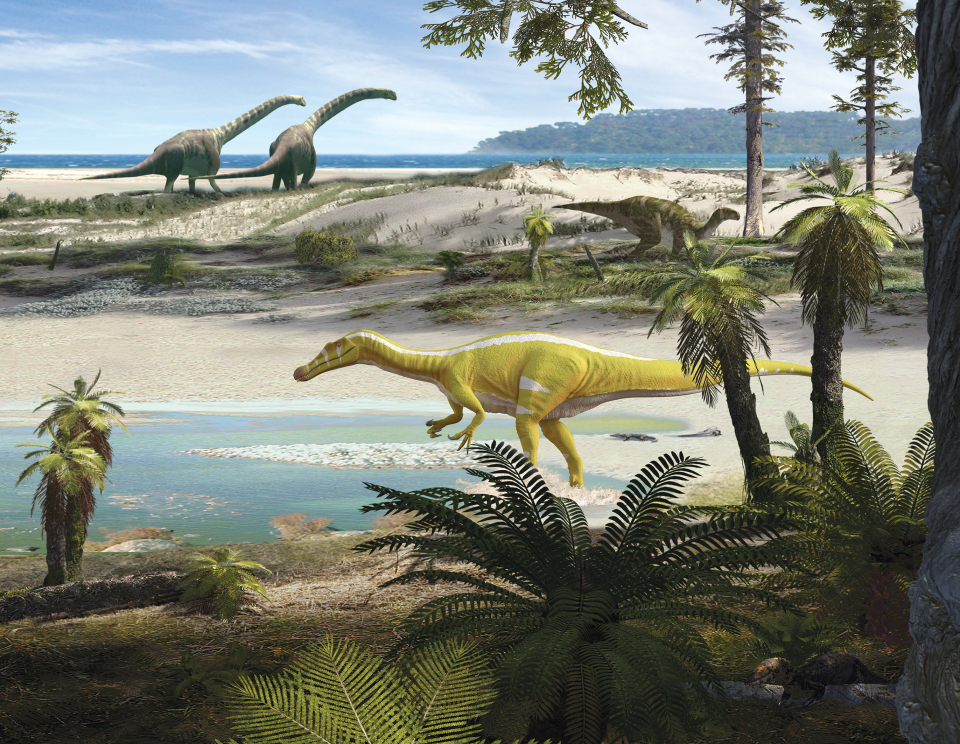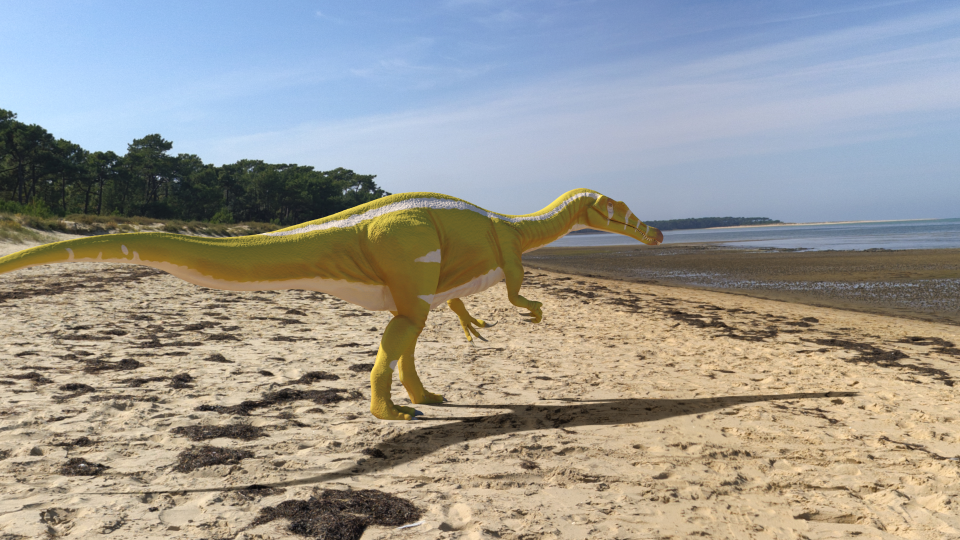Welcome to the family: Scientists identify new dinosaur species with spinosaurus
Researchers in Spain have identified a new spinosaurus species that walked on two legs, feasted on fish and measured between 32 and 36 feet when it was alive.
The researchers who named the newest species of spinosaurid dinosaurs looked at the right jawbone and also vertebrae from a dinosaur found at the Arcillas de Morella Formation in Castellón, Spain.
The team named the species protathlitis cinctorrensis – p. cinctorrensis for short. The findings were published Thursday in the peer-reviewed journal Scientific Reports.
Spinosaurid dinosaurs lived during the late Cretaceous period, at least 93 ½ million years ago, the Natural History Museum said on its website. The spinosaurus is also called the spine lizard and its remains were first found in 1912.
Dinosaurs in the spinosaurus family were carnivorous and had smooth and cone-shaped teeth. Scientists say spinosaurus dinosaurs were just over 45 feet long. They were typically found in Egypt and Morocco and some scientists say they may have spent part of their lives in water.
The dinosaurs had short legs and a wide, paddle-like tail. While some scientists think the dinosaur walked on all fours, some believe it walked on just two legs.
Generally, spinosaurids appear to be considered theropod dinosaurs who walked on just two legs.

How did the researchers identify the new dinosaur species?
The team used a method called phylogenetic analysis when looking at the dinosaur’s remains. The tactic allows researchers to better understand how species have evolved.
Calling its features “unique,” the researchers said the dinosaur had a subcircular depression in its jawbone and concluded that it is a basal baryonychine, a subfamily of spinosaurids.
The team said previously identified spinosaurids had jawbones measuring between 16 ½ and 18 inches.
The new species’ jawbone measured nearly 17 inches.
So there’s a new species of spinosaurids. What does this mean?
The researchers who identified the dinosaur said it’s the first baryonychine dinosaur species from the Arcillas de Morella Formation from the same time period as vallibonavenatrix cani, another type of spinosaurus.
Finding them in the same place means the Iberian Peninsula and the animals that once called it home were much more diverse than researchers initially thought, they said.
Spinosaurids remains have been found in western Europe, especially Portugal, Spain and the United Kingdom, the researchers said. Most remains consist of teeth.
Based on previous research, the team said it’s likely the dinosaurs originated in western Europe during the Late Jurassic or Early Cretaceous period and then made their way to Africa and Asia.
“The establishment of this new European species seems to confirm that spinosaurids appeared during the Early Cretaceous in Laurasia (modern day North America, Europe and Asia), with the two subfamilies occupying the western part of Europe,” the team wrote in its paper.
“Later, during the Barremian–Aptian, they migrated to Africa and Asia, where they would diversify.”

More from USA TODAY
Find your state: Did you know most states have an official dinosaur or fossil? It's true! Here's yours.
Dinosaur egg: It was thought to be a mineral for over a century. It actually may be the first known dinosaur egg
Dinos: A kissable Tyrannosaurus rex? Scientists now think lips hid dinosaur's razor-sharp teeth
Pompeii: Latest bodies found in Pompeii ruins show deaths weren't all caused by Vesuvius, researchers say
This article originally appeared on USA TODAY: New spinosaurus dinosaur species identified in Spain, researchers say

